TLDR: The Government’s response on Tuesday to He Waka Eke Noa’s farmer-led approach to reducing methane emissions was the usual fudge to buy time for yet more magical thinking about cutting emissions without it hurting too much economically and politically. We may kid ourselves, but we’re not kidding the planet.
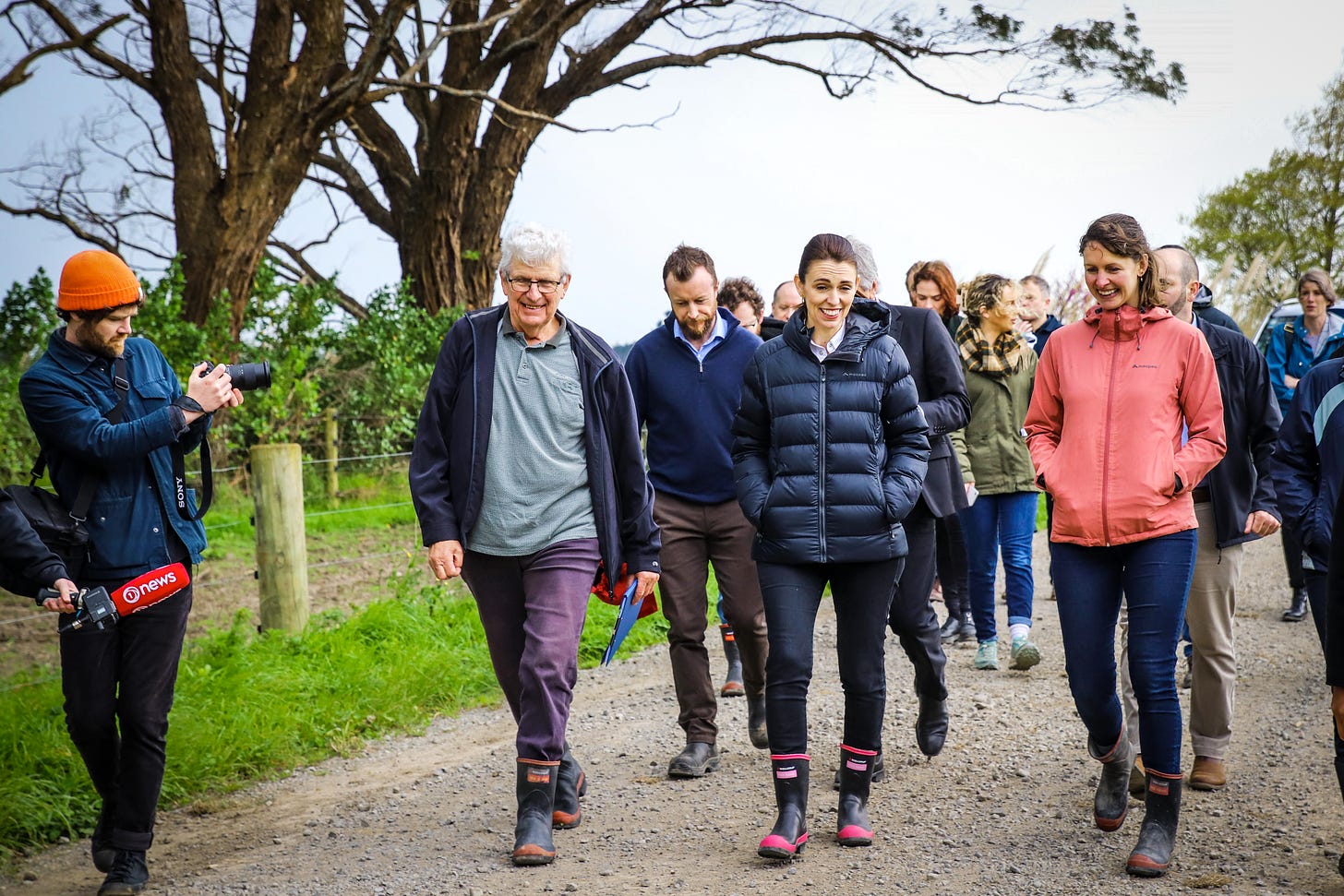
Our political economy is still working its way through the bargaining stage of the five stages of grief1 about the need to actually reduce dairy herd sizes substantially if Aotearoa-NZ is going to have any real chance of meaningfully achieving our emissions reduction targets, or even better, the reductions needed to stop the planet warming by more than 1.5 degrees.
To be fair to farmers, they’re not the only ones still fudging and hoping. Our rural sector has actually moved faster and with more specificity than most townies. Politicians and home-owners in our cities are yet to even get past the anger and denial stages, as we saw in the weekend council election results.
Our glacial pace of grieving for our unsustainable way of earning export income and our unsustainable way of living suburban lives is proving too slow for the planet.
It turns out the physics of global warming are now moving faster than our political economy seems able to move, let alone catch up. We needed to apply defibrillators to the hearts of our export economy and our suburbs. Instead, we’re just testing electric fences with blades of grass. It tickles, but not much more.
The tragedy is we know what to do when biology moves faster than politics. During Covid, just once, we accelerated and circumvented the usual incrementalism of our political economy to shut down our economy in a matter of days for the sake of the health of people, rather than quarterly profit reports.
It worked in 2020, but didn’t in 2021, when the biology sped up and beat the ability of our politicians and citizens to react and adjust in real time.
Climate Change is the ultimate test of our political economy’s ability to adapt and adjust faster than the physical world.
So far, we’re not moving fast enough and the latest “pragmatic approach” proposed by PM Jacinda Ardern on Tuesday kicked the tough herd-cutting calls out into another electoral term with a probably less sympathetic Government. It won’t fool the planet and it shouldn’t fool the rest of us.
Paying subscribers were able to see more detail and analysis below the paywall earlier today and in the podcast above, which includes my questions and answers from PM Jacinda Ardern at the news conference Lynn Grieveson and I attended at a dairy farm near Featherston yesterday. I have now opened this article and podcast up for public viewing, listening and sharing. Only paying subscribers can comment.
First the anger, then the denial, and now the bargaining…
If only we could speed up the process of grieving straight to acceptance and moving on.
Denial - As recently as May this year, former Federated Farmers President (2008-11) Don Nicolson wrote that warnings about methane warming the planet were ‘climate alarmism’ and ‘methane chicanery’ because methane was actually a cooling agent. Citing research launding the benefits of methane by William van Wijngaarden and William Happer2, Nicolson wrote:
“When the laws of physics are applied to methane in the atmosphere and its molecular ability to absorb infrared radiation, it’s clear that it is physically impossible for methane to cause anything but an immeasurably small warming (or cooling for that matter). It’s that simple!” Former Federated Farmers President (2008-11) Don Nicolson
Anger - In 2003, Aotearoa-NZ’s rural community reacted with pure anger when the-then Labour Government led by Helen Clark proposed an $8m levy on farmers averaging $300 per farm per year to pay for research into ways to reduce emissions.
Then-National MP Shane Ardern (a distant cousin of PM Jacinda Ardern) drove a tractor called ‘Myrtle’ up the steps of Parliament in a rally to Fight Against Ridiculous Taxes (FART). That Groundswell-style eruption killed the ‘FART’ tax and eventually led then to an Emissions Trading Scheme (ETS), albeit one that excluded agriculture’s emissions and still excludes them (until January 2025).
Clark’s ETS was enacted in September 2008 just before Labour lost the election to John Key’s National-led coalition. Labour also then lauded it as the world’s first such scheme3. The trouble was it was limited to less than half of the country's climate emissions and had loopholes that truckloads of emissions were allowed to fall through, including agriculture (almost half of Aotearoa-NZ’s emissions) and large chunks of industrial emissions, including steel plants, smelters and any other industries competing with the rest of the world. It languished under Key and was ruthlessly gamed by emitters buying junk credits on international markets. By 2013, the price of carbon credits in our 'world-first' ETS fell under $2/tonne.
It has taken the current Labour Government (supported by the Greens) another eight years to tweak the scheme to make it more credible. It only started to have any real effect last year, 13 years after it was launched. Prices are now around $83/tonne and finally some of the biggest emitters are losing their exemptions. This March 2022 guide to the ETS by Motu Policy Fellow (and current Climate Change Commissioner) Catherine Leining is a useful primer and backgrounder.
Yet even now, agricultural emissions are still excluded. It was not until 2019 that the Climate Change Response (Zero Carbon) Amendment Act specified that agricultural would have to be included in the ETS in some form by January 2025. That was the signal for full-scale bargaining to start as farmers scrambled not to be included in any raw way.
Bargaining - The He Waka Eke Noa process was a three-year exercise in the farming industry bargaining and pleading with the Government to allow it to regulate itself and set its own price in a ‘split gas’ scheme that would allow farmers to offset emissions with a whole bunch of tree planting in gullies and hill country. It issued its recommendations on May 31, including:
a split-gas levy charged at farm level after farmers themselves calculated their long-lived (carbon dioxide and nitrous-oxide) and short-lived emissions (methane);
an on-farm levy for nitrogen fertilisers;
the recognition of widespread on-farm sequestration (often pine tree planting) to offset levy costs;
incentives for emissions reduction paid for from the proceeds from the levy; and,
a system oversight board made up of industry and Government representatives to set the levy, rather than cabinet.
In response, the Climate Commission recommended the adoption of a He Waka Eke Noa-style farm-level pricing system outside the ETS, but without the ability to claim sequestration credits. The Commission argued it wouldn’t be fair on other sectors who couldn’t use such offsets and, most importantly, would not improve emissions much in the long run.
The proposed bargain - So almost 20 years after Myrtle’s ascent part way up the steps of Parliament, something remarkably similar is now proposed, albeit at a much larger scale and with so much more software.
The Government is proposing:
a He Waka Eke Noa-style split-gas farm-level pricing system with the levy’s funds paid for research and incentives to reduce emissions on-farm, starting with an interims scheme in 2025;
only allowing sequestration for riparian (riverside) planting and native trees, rather than wholesale gullies or hill country;
charging a levy for nitrogen at either farm level or at the manufacturer-importer level; and,
the levy being set by Cabinet, rather than than an independent industry-led group.
If this scheme can’t be built and launched by 2025 with different levies for 23,000 different farms, the Government has proposed a backstop of an interim processor-level levy, which would be calculated and charged at the level of 80 dairy companies and meatworks.
Climate Change Minister James Shaw actually argued in Cabinet for a system of hard methane volume limits, within which credits could be traded and a methane price reached. He lost that fight in Cabinet to be the main recommendation, but it’s still going out for consultation.
The bargain’s biggest losers - The modelling in the Cabinet paper suggested a price of 11 cents per kg of methane would be enough to reach the Zero Carbon Act’s targets of reducing emissions by 10% from 2017 levels by 2030, and between 24-47% below 2017 levels by 2050. Remember though that these targets were set before the latest IPCC reports and the Paris agreement made clear much bigger cuts would be needed to keep warming below 1.5 degrees.
The 11c price is equivalent to $3.93/tonne of CO2 equivalent, well below the current market price of around $85/tonne. The proposed price for mitigation incentive payments was the equivalent of $50/tonne. That’s quite a spread… The modelling also assumes the use of several mitigation technologies by 2030 including low-methane genetics for sheep and cattle and nitrous oxide inhibitors.
‘The problem with those assumptions, as outlined here by the NZ Agricultural Greenhouse Centre, is that the main nitrous oxide inhibitor is dicyandiamide (DCD), which we stopped using in 2013 because it was tainting the milk and China didn’t like it. The ability to breed low-methane sheep won’t be available until next year, and even then, will be a slow rollout of cumulative improvements, as detailed here in this article.
Shaw was clearly worried this low price and no limit on overall emissions would made the same mistake made in the first version of the ETS legislated in 2008. Here’s the section in the Cabinet paper on that (bolding mine):
“The proposed farm-level pricing system is for a low marginal price and no overall cap on emissions. Prior to our Government’s reforms last term, the history of the NZ ETS shows that a low marginal price and no cap on emissions were ineffective in reducing emissions.” Cabinet Paper (Page 21, 131.1)
Our poor track record
That experience with the ETS is instructive, given it has done nothing yet to reduce emissions, in part because agriculture was not included. This first chart via the Parliamentary Commissioner for the Environment shows Aotearoa-NZ’s mix of green house gases, while the chart below that shows our CO2, methane, nitrous oxide and overall emissions per year.
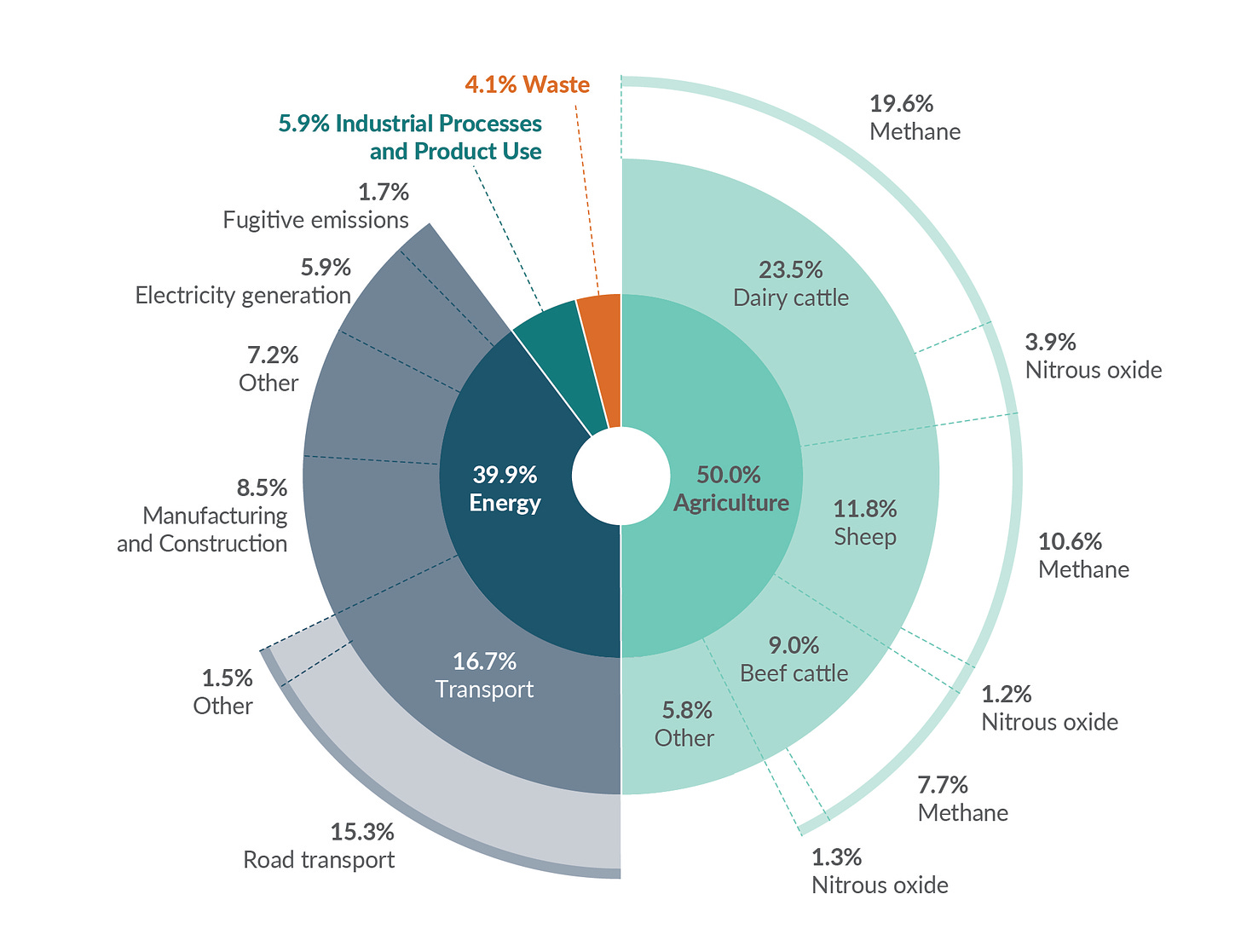
This World Bank data chart shows how vulnerable Aotearoa-NZ is to a backlash from the rest of the world over our agricultural methane emissions, which have stayed high while others, such as the UK, have fallen beneath ours.
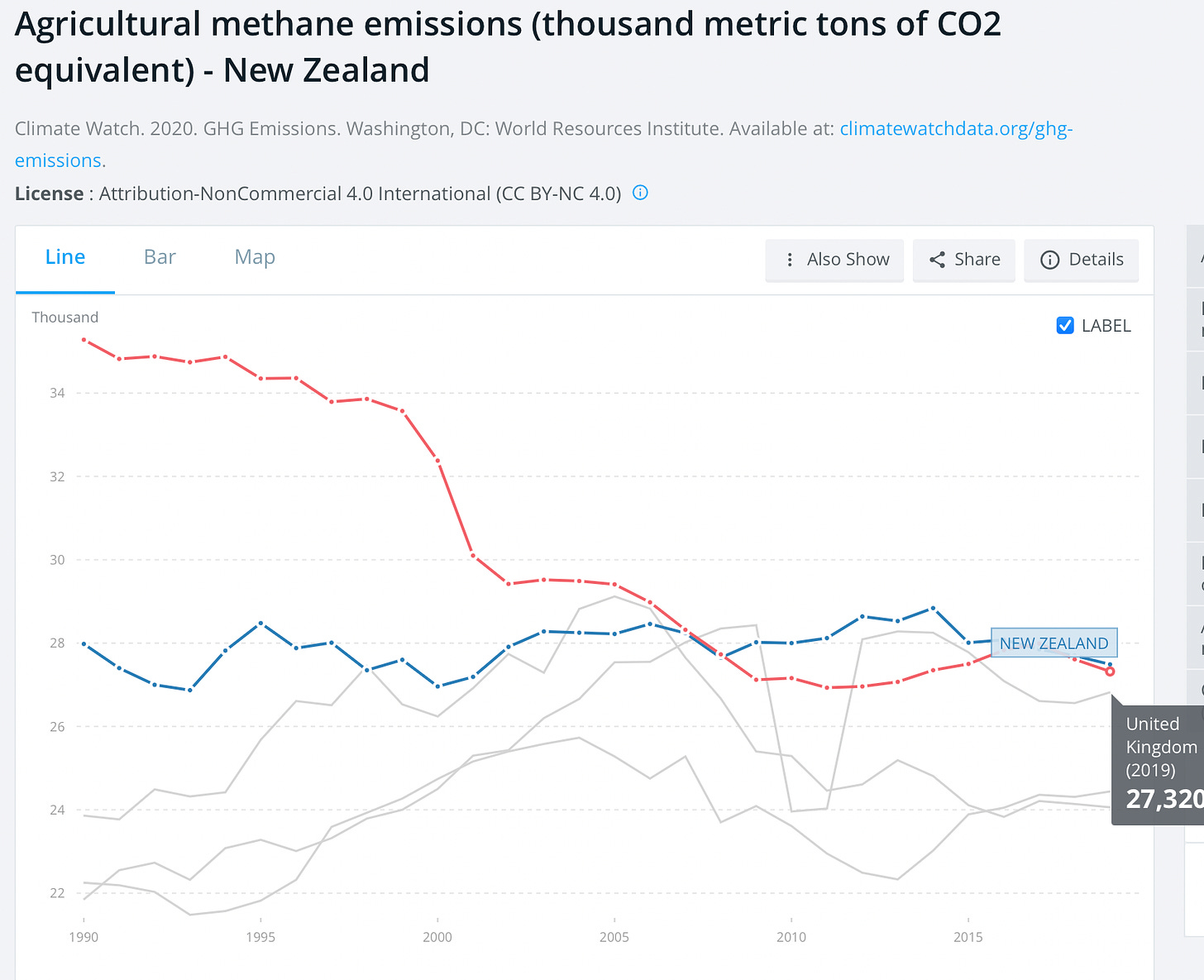
Methane’s short and hot life
The problem of course is that the ‘short-lived’ gases (methane lasts decades) is hard to compare directly with the long-lived ones (CO2 lasts thousands of years and nitrous oxide lasts over a century), especially as methane has a bigger warming effect in its first decade. As the excellent Wellington-based scientist Melanie Newfield wrote in August at her substack The Turnstone (bolding mine):
Methane makes up 44% of our contribution to global warming, about the same as our carbon dioxide emissions. However, that figure is based on a Global Warming Potential calculated over a period of 100 years, which is perhaps misleading when we are trying to get our emissions to “net zero[1]” by 2050. Remember, if we calculate our methane emissions over a 20 year time scale, as some scientists suggest we should, methane is not 25 times worse for the atmosphere than carbon dioxide – it’s 80 times worse. After all, 2050 is not much more than 20 years away. Melanie Newfield via The Turnstone
The other issue is that while our methane emissions per year haven’t fallen, they have accumulated over the last 20-30 years before they start to ‘die off’ in the next 20-30 years. That’s in part because our massive increase in cow numbers since 1990 more than offset the equally massive decrease in sheep numbers. This NIWA chart measuring methane levels at its Baring head sampling station on the south coast of Wellington is alarming.
So what’s the forecast economic impact?
The 52-page Regulatory Impact Statement issued with the 57-page Cabinet Paper, the 97-page consultation document and a 101-page Ministry of Primary Industries and Ministry for the Environment scenarios impact document show the modelling with the preferred farm-level split-gas levy-with-incentives system at the prices above would lead to net revenue drops (after the emissions incentives) of 4-5% overall for agriculture, including:
a 21-37% reduction in production for sheep and beef and a 18% reduction in land use;
a 5% reduction for dairy farmer production and a 3% reduction in land use; and,
offset by an increase of up to 10% in revenues for arable farmers.
Here’s the ‘money shot’ table of various scenarios for prices and levy/price-setting systems (page 9 of scenarios impact document) with my highlighting of the main farm-level split-gas levy scenario (yellow) and the Shaw-proposed hard limit with credits trading scenario (blue).

The worst scenario’s biggest losers - It’s no surprise Cabinet wasn’t keen on Shaw’s hard limits approach, given it would lead to a 29% drop in dairy output, while the processor level levy would have seen dairy output down 9%, lamb output down 24% and beef output down 62%.
So what happens now?
The Government had hoped that the He Waka Eke Noa process might soften the backlash when the inevitable reduction in production, revenue and land use was made clear, but that appeared not to happen, begging the question of why have the three-year delay. Farmers were angry with the decision to not allow farmers to set the levy and to remove the opportunity to offset with widespread tree planting.
Here was Federated Farmers Andrew Hoggard’s immediate reaction:
"The government’s rehashed plan to reduce on-farm greenhouse gas emissions throws out the two and a half years of work the industry did to come up with a solution, supposedly all that time in a ‘partnership’ with government to achieve a workable solution which would not reduce food production
“We didn’t sign up for this. It’s gut-wrenching to think we now have this proposal from government which rips the heart out of the work we did. Out of the families who farm this land.
"Our plan was to keep farmers farming. Now they’ll be selling up so fast you won’t even hear the dogs barking on the back of the ute as they drive off.” Federated Farmers President Andrew Hoggard in a statement.
The Government will take submissions until November 18 and Cabinet is due to make final decisions in February 2023, before a select committee process and legislation ahead of the election.
But will it be repealed anyway?
National has been cautious in not saying immediately it would side with the farmers and repeal it, as it has promised to repeal Three Waters, interest deductibility, brightline, ringfencing and the 39c tax rate.
This underlines the perception that both National and Labour have that any change needs to be incremental to avoid it being overturned whenever there’s a change of Government. Both have embraced what Bill English termed “incremental radicalism,” in this Duncan Greive piece from 2017.
The trouble is the planet is not waiting for the incremental change to eventually become the radical shift lower in emissions. Unlike in the first year of Covid, our political economy is not moving radically enough to stop the climate’s incremental changes cascading into a series of dangerous tipping points.
Our political metabolic rate is too slow to digest what is needed to combat the accelerating pace of climate change.
Ka kite
Bernard
PS: As you can see, this is a very focused and detailed email on a complex subject, which is why I took a day and a half to write it. I appreciate your patience and hope the more reflective and broad approach is useful. Paying subscribers can comment below if want it opened up to the public and/or vote here. If it gets over 100 votes I’ll open it immediately.
The Kubler-Ross ‘five stages of grief’ are typically listed as denial, anger, bargaining, depression and acceptance
William Happer, a physicist now aged 83, was appointed by US President Donald Trump in 2018 as a senior director of his National Security Council to campaign within the US Government against prevailing climate science. Happer has described carbon dioxide as a “boon to plant life” and once said "demonization of carbon dioxide is just like the demonization of the poor Jews under Hitler." He resigned after a year because his climate change denials were seen as too extreme and might damage Donald Trump’s re-election chances in 2020. William van Wijngaarden is also a physicist noted for challenging the IPCC’s science credentials and arguing that carbon dioxide was good for the planet.
The PM’s answer to my question today about whether the Government’s response to He Waka Eke Noa was that of a ‘climate emergency response’ was to say the ‘split-gas’ emissions levy was the first in the world. I wasn’t quick enough (or brave enough) to ask if the world cared whether this scheme was the first, or whether it actually reduced emissions fast enough to stop cooking.





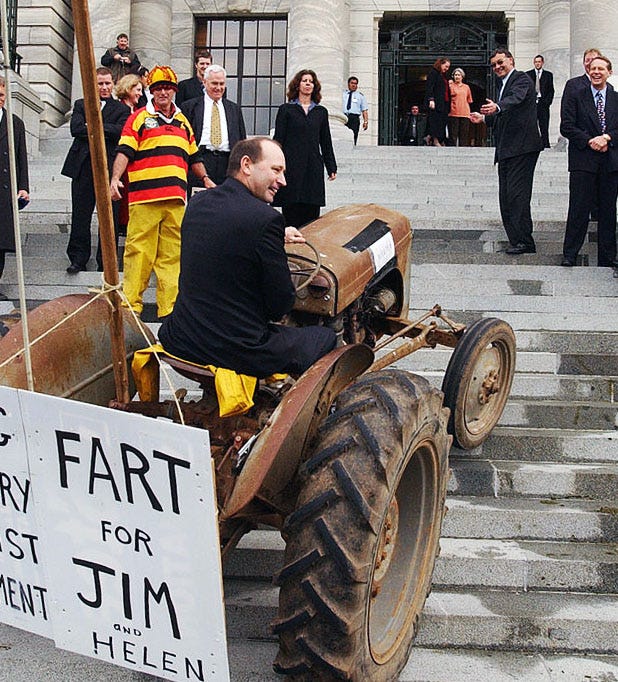
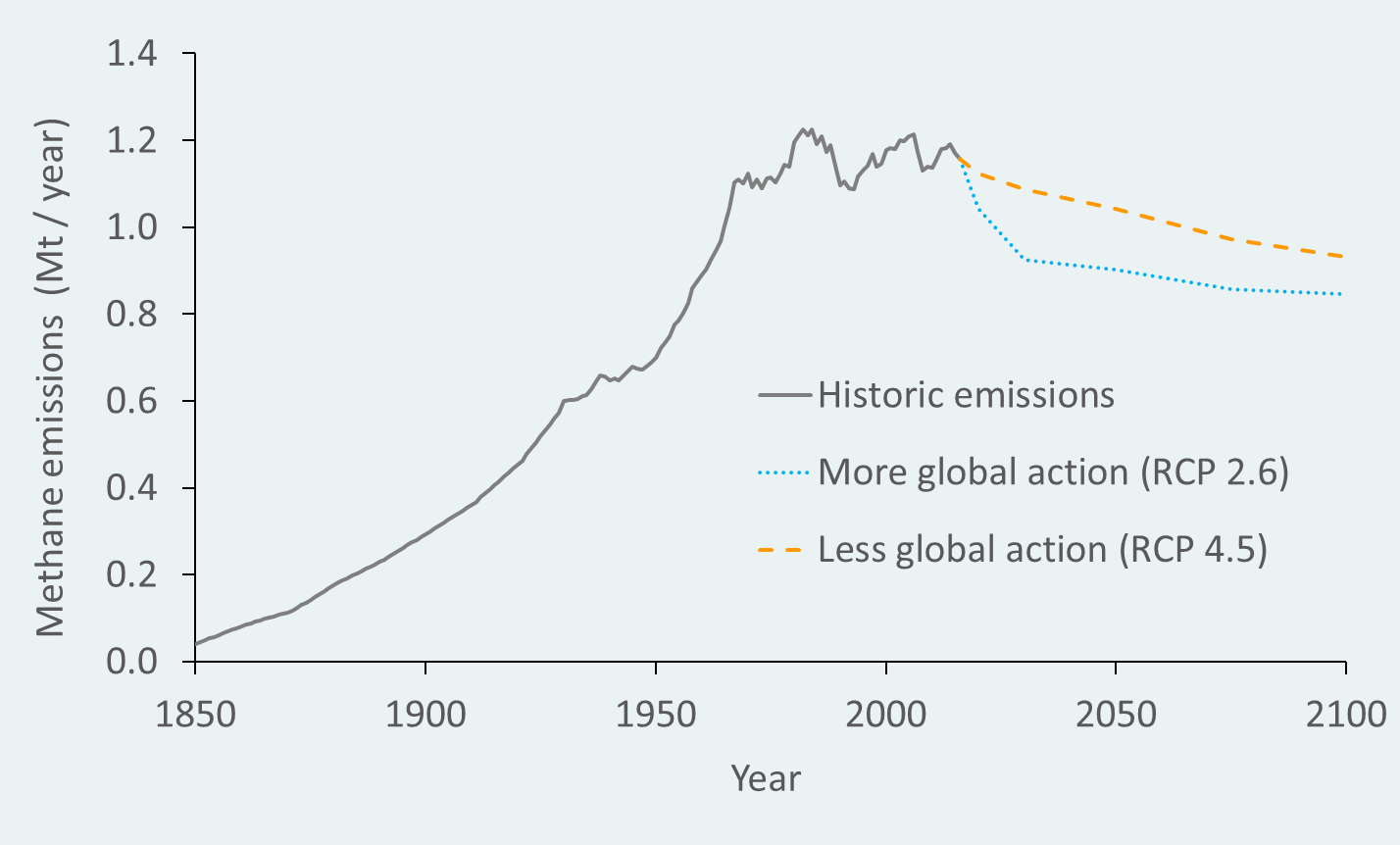
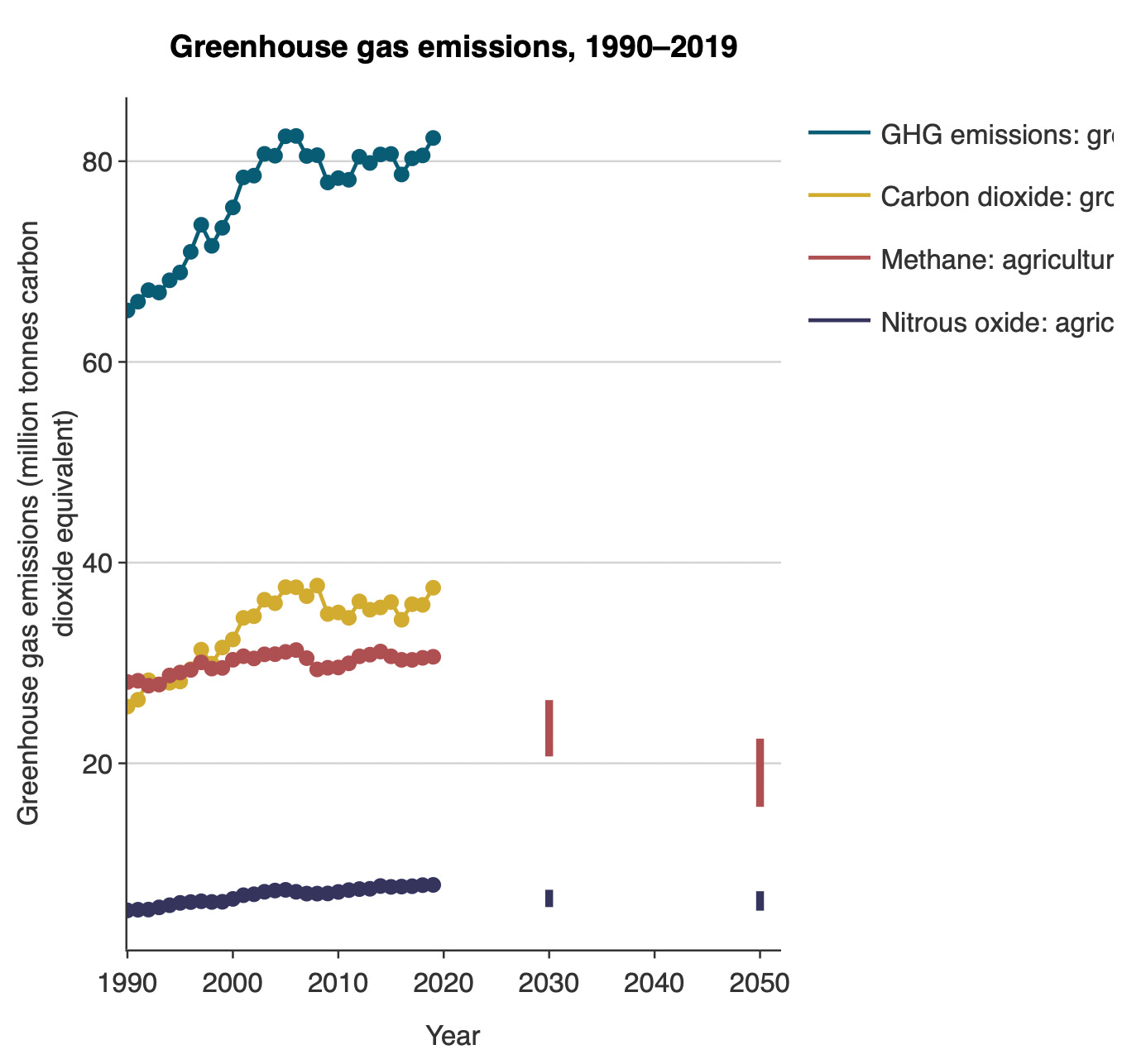
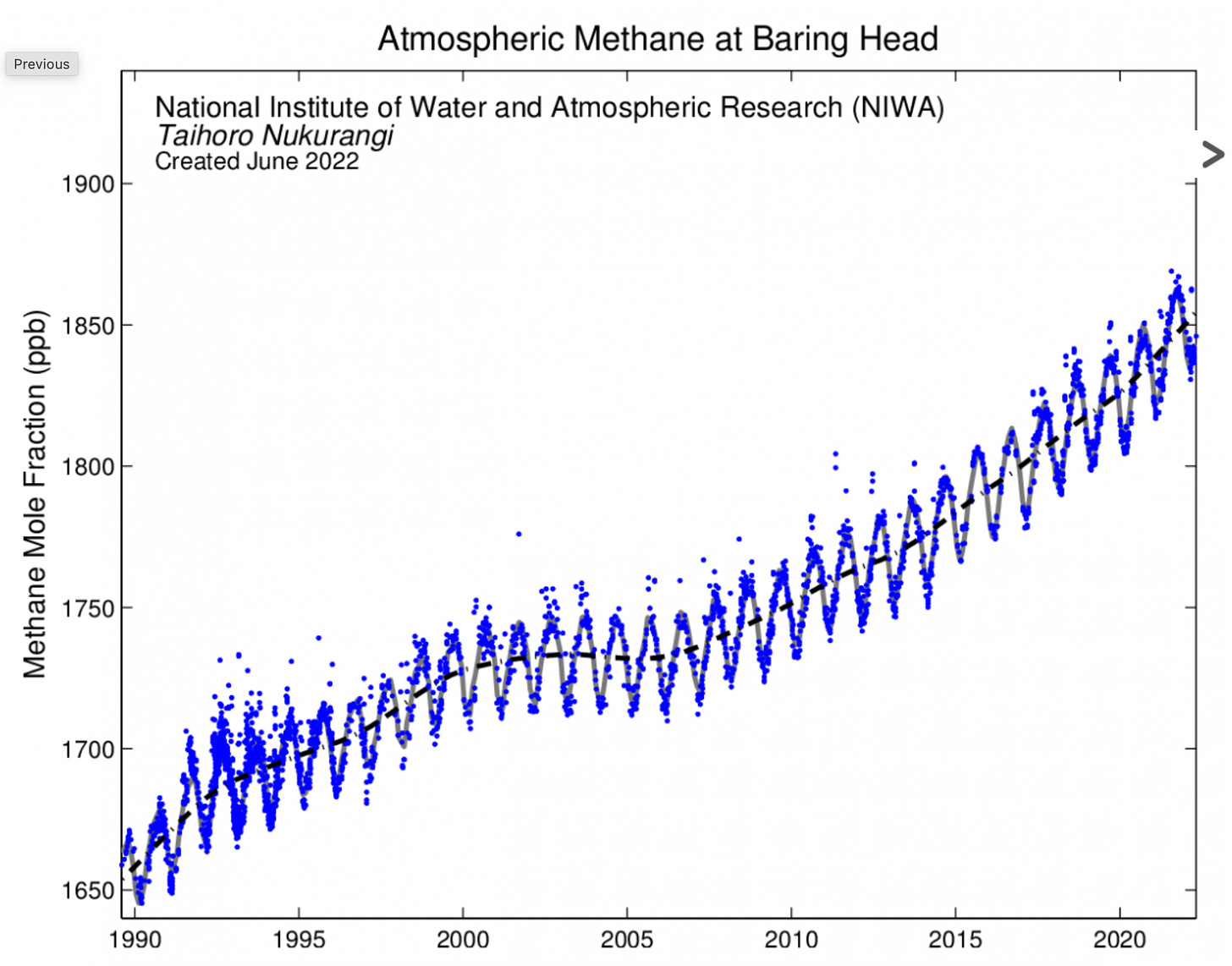









Share this post